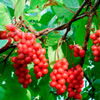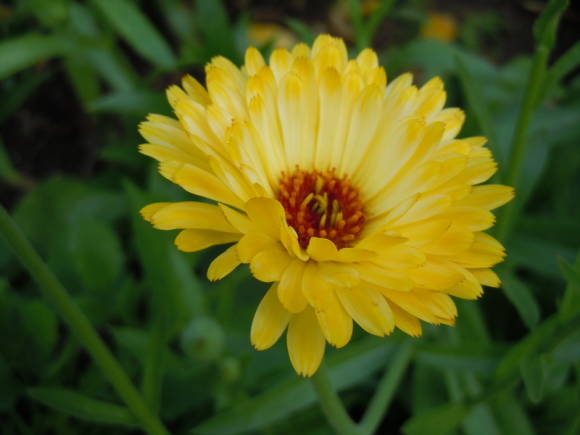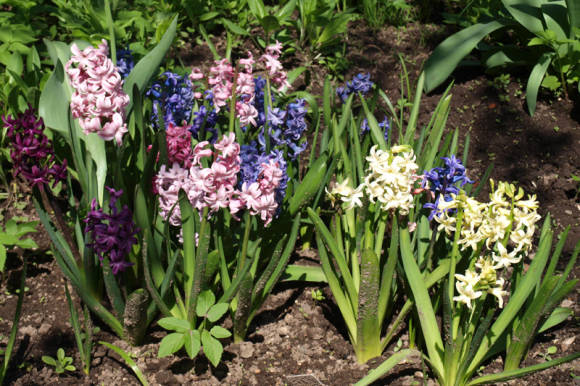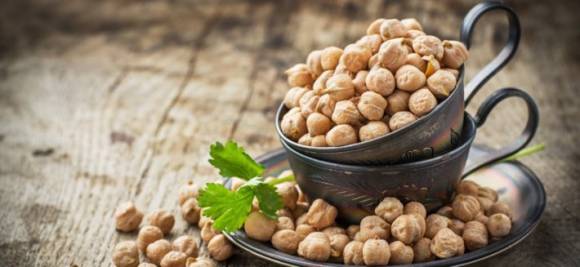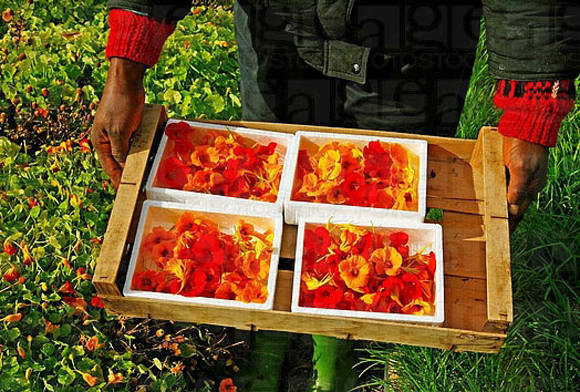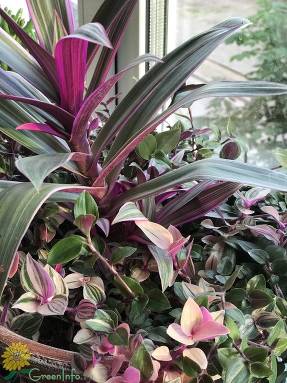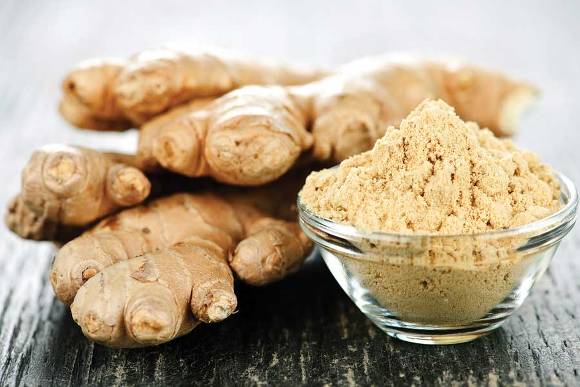Continuation. Beginning in the article Hibiscus: modern varieties
Despite its unearthly beauty, Chinese hibiscus (Hibiscus rosa-chinensis) very easy to maintain. But, like any plant, it has features that must be taken into account when growing it.
Buying plants... Quite strong and interesting varieties of "Dutch hibiscus" can be bought in our flower shops when the sales season starts in Holland, from the beginning of April to September. In winter, insufficiently stable specimens arrive. Florida varieties can only be purchased from amateur flower growers.
Priming. Hibiscus needs moisture and breathable soil. Ready-made, purchased peat-based soils are not entirely suitable for the successful cultivation of hibiscus. It is good to add leaf humus to these substrates, it structures the soil, makes it moisture-consuming. The addition of sand, sod land will have a good effect. The soil should be slightly acidic, pH 6.8. At other pH values, hibiscus will not be able to absorb the necessary nutrients from the substrate.
Illumination, temperature. Hibiscus prefers south-facing windows and is able to grow on those windowsills where many other flowers simply burn out. It can be a southeast, south, southwest window. It will not be possible to achieve stable long-term flowering on north-facing windows, since hibiscus needs to be in direct sun for 4-6 hours a day for flowering. This plant came to us from the tropics, therefore, the dormant period due to nature does not have and is ready to bloom, as long as there is enough light and the temperature is suitable, at least all year round. The comfortable temperature for Hibiscus Rosa-sinensis ranges from +24 to +30 degrees. At higher temperatures, buds may fall off. On especially hot days, you need to shade the hibiscus a little from the direct sun.
It is also necessary to protect the roots of the hibiscus from overheating, especially if it is planted in a dark plastic pot. The temperature at which the hibiscus stops blooming is +15 degrees, at temperatures below +10 degrees the roots cease to absorb water, as a result, even with a wet clod of earth, the hibiscus leaves droop. The critical temperature is +7 degrees.
Some varieties of Chinese hibiscus, especially those with brown flowers, need a little less light.

Watering. During its active growing season, which lasts as long as there is light and warmth, hibiscus requires a lot of moisture and loves abundant watering, especially on hot days. This plant is not adapted to storing water in its parts, therefore, a lack of moisture immediately causes a decrease in turgor, hibiscus can lose all leaves. If the drying is prolonged, then the death of the plant occurs.
However, the overflow of the plant should not be allowed, with stagnant moisture, the roots of hibiscus are affected by fungal diseases and rot, in addition, oxygen ceases to flow to the roots, which is very important for the plant. Water must be abundant, but do not allow the presence of water in the pan - hibiscus does not like "wet feet". It is recommended to water the hibiscus early in the morning so that the plant dries up during the day. On winter days, when there is little light and it becomes cool on the windowsill, the hibiscus falls into a forced sleep. The need for water is falling, it is necessary to reduce watering so that the roots do not rot. If, for some reason, the hibiscus has lost all or many of its leaves, then its transpiration is greatly reduced, watering must also be reduced, and the clod of earth must be kept slightly moist.
Top dressing. At the stage of intensive growth, hibiscus needs regular fertilizing with complex fertilizers. However, fertilizers for flowering plants are not suitable for him. It is noticed that G.Chinese needs much lower doses of phosphorus than other flowering plants, an excess of phosphorus negatively affects the quality of flowering, its abundance and causes plant poisoning. In this case, the potassium content should be high. Optimal formula: NPK = 9-3-13; 10-4-12; 12-4-18 (nitrogen, phosphorus, potassium). Therefore, the standard fertilizer for flowering with the formula NPK = 16-20-27 from POCON, NPK = 15-21-25 from Agricola, NPK = 3.8-7.6-7.5 from Etisso, etc. are not suitable for hibiscus. ... In terms of its composition, the universal fertilizer for potted plants from POCON with NPK = 7-3-7 turned out to be closest to the optimal formula.
In addition to the basic nutrients, hibiscus needs magnesium, it is the core of the chlorophyll molecule. With a lack of magnesium, chlorosis occurs, while the leaf turns yellow between the veins, which remain green, sometimes dark spots appear on the leaves. To fill the magnesium deficiency, you can use Epsom salt, but it is better to purchase magnesium in chelated form (Siliplant), you can use Greenwold fertilizer for conifers with N - 3%, K - 2%, MgO - 5%, this will also serve as an additional source of N and K.
Top dressing should be carried out on cool days, early in the morning or in the evening after sunset, and only on the previously shed earth. You can feed it once a week, but it is better to apply fertilizer more often, but in proportionally reduced doses.
Hibiscus responds well to foliar feeding. For them, it is necessary to dilute the fertilizer 10 times of the weekly dose for feeding under the root and sprinkle the leaves in the morning or in the evening. With a decrease in the rate of vegetation, along with watering, the dose of fertilizers should also be reduced, with complete rest, cancel feeding altogether. A recently transplanted plant should not be fed.

Transfer... Young plants are transplanted once a year, older ones - once every few years. Before transplanting, you need to make sure that it is necessary. The lump of earth must be completely entwined with roots. After transplanting, it is recommended to water it for a while from the pallet so that the young roots look for water and begin to germinate into a new substrate. As for the plants from Holland, I recommend replanting them immediately after purchase, using the method of careful transshipment, without damaging the clod of the earth. It is better to take a slightly larger pot than is usually recommended. This need is due to the fact that Dutch hibiscus is highly stimulated to bloom. This inhibits their normal development and growth, increases vulnerability to spider mite infestation. It is necessary to dilute these stimulants a little, so the whole season for such hibiscus feeding will not be required.
Pest control. With proper care, hibiscus is not very susceptible to various diseases and pests. However, Chinese G. can be attacked by aphids, whiteflies, thrips, and spider mites. It is possible to completely cure a tick only by settling the conditions of detention, in some cases, transplant on time. To combat insects, hibiscus growers do not recommend using oil-based preparations, they are very poorly tolerated by hibiscus leaves. Better to take water-soluble drugs such as Aktara.
Pruning, shaping. Hibiscus grows strongly over the summer, while blooming only on the tops of the shoots. To get a real "rose bush" it is necessary to form a plant in time. Pruning can be done in the fall, after flowering, and try to root the cut branches. Or in the spring, until mid-February, until the plant starts to grow. Pruning later is not recommended as hibiscus blooms on shoots older than three months. Having pruned in May, you can not wait for flowering at all in the summer.
Hibiscus is calm about pruning, even cardinal. From the remaining buds, side branches will start to grow, which will give lush flowering in the new season.
Reproduction. Methods of vegetative propagation are used to preserve the variety. For "Dutch" varieties, cuttings are suitable."Florida" varieties are considered more capricious and the method of grafting is more often used for their reproduction. For breeding new varieties, seed propagation is used.
